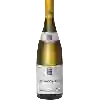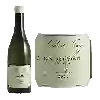The Winery Olivier Leflaive of Burgundy

The Winery Olivier Leflaive is one of the world's great estates. It offers 125 wines for sale in of Burgundy to come and discover on site or to buy online.
The Domaine Olivier Leflaive is one of the most prestigious wineries in Burgundy, France. Located in the villages of Puligny-Montrachet and Chassagne-Montrachet, the estate is known for its white Chardonnay wines, which are crafted in a relentless pursuit of the highest quality. When you enter the Domaine Olivier Leflaive, you step into a world of elegance, characteristic of the finest wines from this region. The white walls of the estate buildings are adorned with the estate's logo, a swan, symbolizing their commitment to offering you exceptional wines. The harvests are carried out entirely by hand to maintain optimal quality and handle the best bunches. The wine is then meticulously aged in oak barrels, which gives the wine its complex and subtle character. The estate produces white, red, and even sparkling wines, which can be tasted all over the world. The white wines are the estate's signature, and include village wines such as the Chassagne Montrachet, or unique vintages such as the Montrachet Grand Cru. Domaine Olivier Leflaive is dedicated to creating wines of exceptionally high quality, and it offers you the opportunity to taste in the estate's cellars during tastings organized each year. Thanks to their meticulous work and expertise, the Domaine Olivier Leflaive is the spokesperson for the champagne of Burgundy, and is an integral part of the history and culture of the region.









































































































